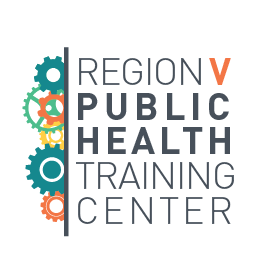By Kimiko Yamaguchi Reed, BA(c), Future Public Health Leaders Program
How should one engage in public policy?
Moreover, do people even want public health practitioners to be politically active, or is it better to remain silent?
In the current politically charged environment, these questions are increasingly difficult to navigate. However, one thing remains clear: with racism as an ongoing public health crisis, now is not the time to stay silent. With the lingering spotlight cast on the public health community due to the COVID-19 pandemic, it is imperative that public health practitioners use their voices to advocate for social justice in public policy.
As to the question of how to engage in public health policy as a public health professional, one favored method is the Health in All Policies (HiAP) approach. HiAP was first introduced in 2006 as part of the Finnish European Union presidency. According to the World Health Organization, Health in All Policies “is an approach to policymaking that systematically considers the health implications of decisions across sectors, seeking synergies and avoiding harmful health effects of policies outside the health sector in order to improve both population health and health equity.”
According to the National Association of County and City Health Officials (NACCHO), “more than 5 states and 20 local jurisdictions have adopted a formal HiAP policy or initiative and countless public health practitioners utilize informal HiAP strategies to protect the health of their communities.”
In the post-pandemic era, adopting HiAP practices has become even more relevant. COVID-19 showed us that health impacts every sector of our lives, and emphasized the need for better public health infrastructure. To do this, it is necessary for public health practitioners to utilize the HiAP approach. Not only is HiAP an effective method of integrating antiracism and the social determinants of health into public health practice, but it is also a way to extend your practice into meaningful advocacy.
As we train the next generation of public health leaders, it is important to pass on this mindset so that we might extend the scope of health-conscious policy work.
To do that, here are some tips on how to continue to apply a Health in All Policies mindset to your practice, and how to model it for others. These tips are informed by the resources recommended as further reading at the end of this blog.
5 Ways to Engage in a Health in All Policies Mindset
1. Reframe your perspective with a policy lens.
One of the most important aspects of applying a Health in All Policy mindset is staying curious about how policies impact your life! To do this, try adding a policy lens to your usual train of thought:
“I’ve got bills to pay,” becomes, “I’ve got bills to pay. I wonder how utility bill costs impact people’s ability to pay for healthcare? Are there policies regulating costs?”
“Wow, traffic is so bad today,” becomes, “Wow, traffic is so bad today. If my commute is this bad, I wonder how transportation policies impact people’s access to healthcare services.”
2. Practice identifying barriers to health.
It is easy to stress the importance of health-conscious policies, but much harder to actually put into practice with specific, actionable policy recommendations. One of the primary functions of equitable policymaking is identifying barriers and providing support to address them. In the context of health-conscious policymaking, it is important to identify barriers to health so that we can better ideate policies that will effectively address them.
3. Start small, then abstract out.
Policy engagement can be daunting in scope. One of the best ways to begin is by starting small. What are some local policies that impact the scope of your work? What are some local policies that impact your community outside of work?
Thinking about these local policies is a great starting point to then expand to larger policies with wider impacts. By recognizing how policies at the local level impact your physical and social environment, you are practicing the skills needed to recognize how policy impacts health at a larger scale.
4. Lean on your team for support!
No social justice movement was the work of a single person. Advocacy work is a constant uphill battle, and it can be exhausting. It is important to regroup with your team for support – and remember who your team is! Remember that public health impacts every field, so don’t be afraid to reach out to those in other sectors and bring them into the mission of Health in All Policies. It takes a collective effort to make a difference!
5. Remember that health is a non-partisan human right.
Perhaps one of the most confusing aspects of policy engagement is how to navigate such a polarized political climate. When engaging in a Health in All Policies mindset, it is important to remember that health is a non-partisan human right.
It is a well- agreed- upon belief among public health professionals that everybody deserves an equal opportunity to lead a healthy life. Entering the policy engagement space with this in mind should help to assuage any doubts and fears you might have about potentially navigating ideological rifts.
To learn more, check out these resources:
- Health in All Policies: Who, What, Why, How – Region V Public Health Training Center
- Health in All Policies: Examples from Practice – Region V Public Health Training Center
- HiAP Online Training — Rutgers NJAES Office of Continuing Professional Education
- From Start to Finish: Health in All Policies — ChangeLab Solutions
- Health in All Policies: Training Manual — World Health Organization
- Health in All Policies — American Public Health Association
- Public Health Policy and Advocacy — University of South Carolina: Arnold School of Public Health

